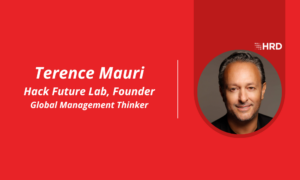Change management in times of digital disruption
- 5 Min Read
Susy Roberts, Executive Coach and Founder, Hunter Roberts, discusses managing change in a world of rapidly increasing transformation.
- Author: Louron Pratt
- Date published: Jun 6, 2019
- Categories

The speed of digitalisation is one of the biggest concerns for employers and employees alike. The world is connected like never before and even the smallest of businesses can trade internationally. Some individuals and organisations may embrace this change intuitively.
For others, the rapid pace of change is bewildering. Which latest fad should we invest in? How much time should we devote to learning about the latest piece of technology? What will be the next iPhone, and what will be the next Sinclair C5?
Within a century, digitalisation has reduced our working week by 20 hours but placed more demands on us to be available 24/7. In a single generation, technology has replaced typing pools with IT departments and clerks with CRM software.
Its impact goes much further than simply deploying new technology. Change management is no longer simply about briefing teams on new premises and offering a choice between a relocation package and redundancy. Digitalisation permeates every area of our lives, work and personal. It reduces our real estate costs by allowing us to equip half of our workforce to work from home. It widens the talent pool and allows us to recruit from Hong Kong or Huddersfield.
Change is constant and, as Stephen Hawking said, intelligence is the ability to adapt to it.
Set the vision
Nostalgia has no place in the boardroom. In a society which is constantly changing politically, culturally and technology, strong leadership is crucial. The whole leadership team need to be completely aligned behind the organisation’s vision: what it stands for and how it will move forward. Whatever the political leanings of an individual, outdated views on working practices, gender, sexuality, religion or any other contentious issue cannot be allowed to be aired. One rogue comment from a leader with one foot firmly in the past can spread around the world and destroy a reputation in the time it takes to compose a Tweet and hit ‘send’.
This means strong personal development for every leader, measured against a clear set of values. One to one coaching, mentoring and peer-to-peer discussions are all essential to ensure that the leadership team share the values of the organisation. If they don’t, they can’t be expected to support their teams through the constant pace of change that’s part and parcel of day to day life.
Focus on the future
Intelligent leadership is about focusing on the fact that change will happen and being agile enough to deal with it. Rather than constantly playing catch-up, leaders should develop strategies that don’t become redundant as soon as their operating technology becomes obsolete. Artificial intelligence, for example, is one of the most rapidly advancing sectors in digital technology. But, as one contributor to Forbes recently pointed out, it replaces tasks, not jobs. Automating elements of a job doesn’t make it redundant – it just requires different skills to be able to carry it out.
It’s impossible to plan for every outcome that increasingly intelligent technology could bring about. Instead, we should focus on equipping people for the possibility – or rather, probability – that their roles will change and help them to refine their skills accordingly.
Honesty is the best policy
Some elements of an organisation should always remain confidential. Informing employees that a major restructure is being mooted around the boardroom could prompt talent to jump before they’re pushed, only for the idea to be taken off the table.
But when a major change is confirmed, the top team should lead by example. Effective leadership, particularly during times of turbulence requires absolute transparency about potential outcomes, collaboration and consultation across the organisation, clear communication and inclusivity.
For larger organisations, it’s not always possible for the CEO to have a frank conversation with the frontline. Ambassadors are necessary to deliver the message, provide reassurance and help people to adapt. The vision should be filtered down from the very top, with every leader sharing the agreed values and messages with a trusted team, making it clear that their door is always open for feedback and concerns. Consultation shouldn’t be a tick-box exercise in meeting regulations; asking the questions means you must be prepared to listen to – and act on – the answers.
Be proactive, not reactive
Leaders often spend a huge amount of time analysing how people may react to change, but the reality is you can’t possibly know until the announcement has been made. There are so many factors that affect how people react to transformation change, and personal preferences play a huge part. A change that may look good on paper may not sit well with someone who has to make drastic changes in their home life to accommodate it – for example a much longer commute if there’s a relocation or finding space for a home office away from noisy family life if an organisation switches to remote working.
Rather than spending time trying to predict how people will react, resources should be focused on planning for the support people will need to adapt. What form should the support take? How long should it be in place? What external resources need to be brought in? What new learning and development should be offered?
A change management strategy should identify what these questions are. Waiting until you need the answers is too late.









